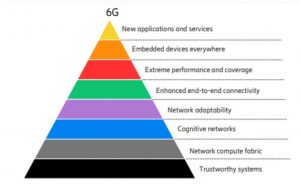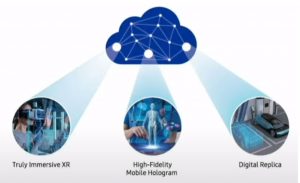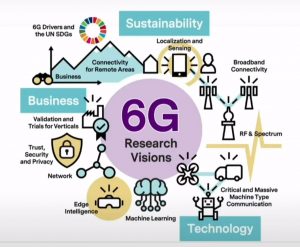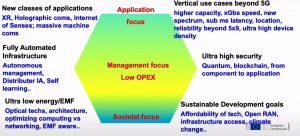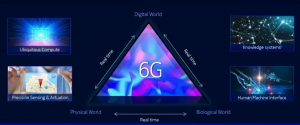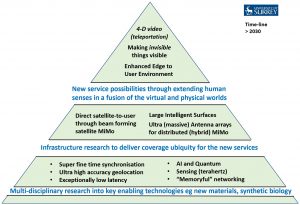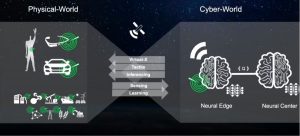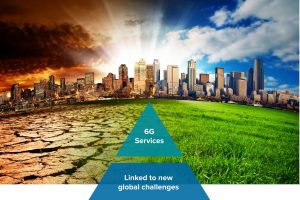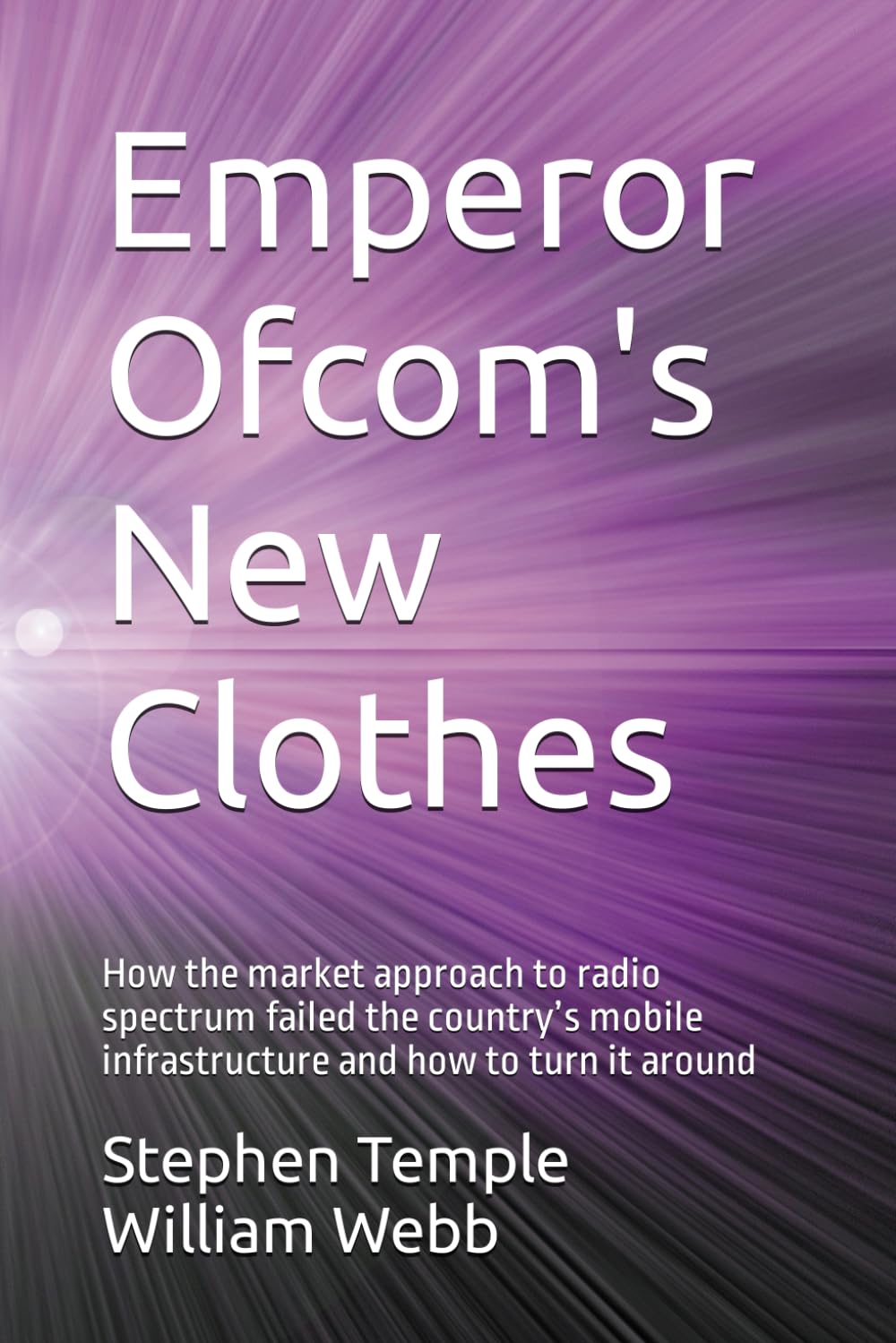With the precision of a swiss watch, no sooner has 5G just started to be rolled out in 2020 than the first conversations began on 6G. Many mobile operators were aghast at the thought of there ever being a 6G, as they struggled to convince their shareholders that the substantial 5G investments still to come were necessary. The battle over whether 5G should be the last of the “mobile generations” was short. The onward move towards 6G in the research community was unstoppable. The first 6G visions began to emerge:
Ericsson
Samsung
Oulu University
European Commission
Nokia
University of Surrey 6GIC
Huawei
An emerging theme was new 6G services emerging from the fusion of the physical-virtual-biological worlds. Some have referred to this as “the Internet of Senses”. Satellites featured on the 6G landscape. The old staples of spectrum efficiency, security and energy efficiency were evident. AI was everywhere, with Huawei going into some detail. What was notable was less emphasis on setting up front key performance indicators for 6G, like leaps data speeds. The thought was that these performance targets should emerge later once there was a clearer picture of the demands from candidate new 6G service and where 5G appears likely to be a constraint on progress. There is far more prominence in these early 6G visions on 6G enabling new services to meet the big societal challenges ahead. These appear in several illustrations at the apex of a triangle or spear head.
There is much to be said for this, as climate change, pandemic control and sustainable economic grown look set to radically change the way we all work, stay safe and play and that is likely to have a profound effect on our pattern of digital communications.
Where things stand today is a high global interest in the research community for 6G. The historic customers for new mobile network upgrades, the mobile network operators, are distinctly cool about a new 6G radio access interface that will land them with another high investment requirement. They are still struggling to see how they will get a return on their 5G investments. There are lots of abstract ideas and aspirations emerging from the vendor and research community. But nothing that looks anything like a new mobile technology game changer and least of all something that would become a magnet for the levels of new investment a successful mobile technology generation will require.
6G, for the moment, is looking like a “consolidation generation” (much as 4G was for 3G) putting right all the shortcomings of the earlier generations. The best bet is for the Network of Networks providing the framework for this.
That would be no bad thing as the rush in the earlier generations for ever higher data speeds has left a legacy of patchy quality of mobile coverage across many countries – and “coverage” sits at the very heart of the mobile “promise” of connectivity whenever and wherever customers demand it.
The best forecast for what 6G is likely to be then is the fusion of cellular mobile technology, WiFi technology and satellite technology into a powerful next generation infrastructure of seamlessly interlinked infrastructures levelling up performance everywhere – so finally that elusive 10 Mb/s is always there the very instant I need it.
